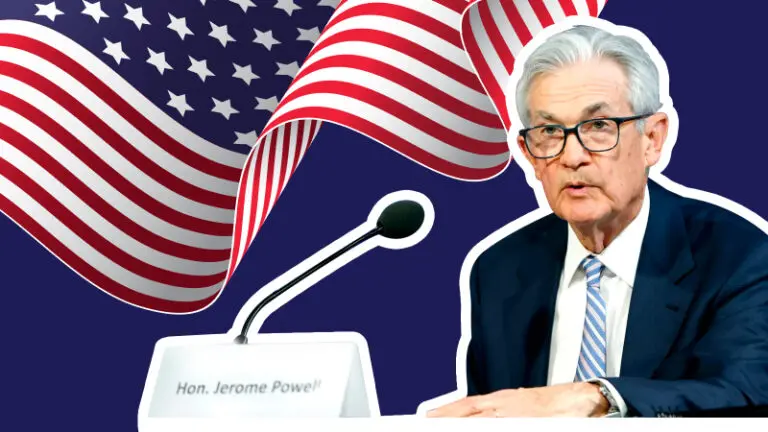
WHY THIS POWELL SPEECH WAS CLOSELY TRACKED?
Normally, speeches delivered by Jerome Powell are closely tracked. This time, the situation was also special. Recently, there were indications from Powell, Barr, and Bowman that inflation risk was still a potent risk. That had led to some confusion over the trajectory of rates in 2025. However, speaking at the National Association for Business Economics (NABE), Philadelphia, Jerome Powell set these doubts to rest.
Powell made it clear that at the current juncture the risk to jobs was higher than the risk to inflation. Also, there was the risk of the job situation imploding rapidly and Fed could not take chances. That was a fair indication that there would be 2 more rate cuts in this year, which was the best-case scenario painted by the CME Fedwatch. Powell also spoke at length on the balance sheet strategy of the Fed, but it was rates that mattered.
WHY THE FED BALANCE SHEET IS IMPORTANT?
Fed balance sheet is not like a traditional business balance sheet, since its goals are entirely different. For instance, if you look at the Fed balance sheet, the liability side added up to $6.5 Trillion; largely comprising of physical currency of $2.4 trillion and the reserves held by depository institutions at the Federal worth $3.0 trillion. These reserves form the backbone of the US monetary system as they are the most liquid asset and only Fed can create them. Adequate reserves ensure safety and soundness of the US and global banking system.
More interesting is the assets side of the Fed balance sheet. This comprises of close to $4.2 trillion of US Treasuries and $2.1 trillion of government-guaranteed MBS. This is the assets side which Fed has consistently used in crises like the global financial crisis of 2008 and COVID crisis of 2020 to infuse liquidity. By buying securities from the banks and institutions, government absorbs the paper and infuses liquidity into the market, which is equivalent to reserve currency creation. It is a critical tool of monetary policy for the Federal Reserve, and has been extensively used in recent times.
WHEN WILL BALANCE SHEET SIZE NORMALIZE?
One of the points that Powell addressed in his speech was about when the balance sheet size will return to regular levels? The balance sheet saw a sharp spike during the GFC and again during COVID crisis. To be fair, there has been unwinding of balance sheet size since COVID, but it is still very high by historical standard. According to Powell, there is a method to this madness as ample reserves have proven highly effective for the US Federal Reserve in controlling policy rates and promoting financial stability. So, is big going to be the norm?
According to Powell, this policy of keeping a larger balance sheet has proven to be effective in keeping the banking system liquid. A higher-than-normal balance sheet size allows the Fed full control over rates and liquidity, even when balance sheet is being trimmed. Since June 2022, the Fed cut its balance sheet size by $2.2 Trillion from 35% of GDP to 22% of GDP. This is still much higher than historical levels, but gives the Fed better control over the macros. The broad implication is that balance sheet size may be lower than COVID peaks, but will definitely be much higher than old-normal.
MILLION-DOLLAR QUESTION – OUTLOOK FOR INTEREST RATES?
Powell admitted that the US shutdown had handicapped the Fed as data flows were slow. However, Fed has access to several alternate high frequency indicators to look at. According to Powell, the alternate data points indicate that outlook for employment and inflation had not changed much since the September FOMC meeting. One clear inference is that the GDP growth is much stronger than anticipated. But the big question is on the employment front!
While unemployment rate remained around 4.3% in August, there was a sharp slowdown in payroll gains. The fall in labour force growth is due to lower immigration and lower labour force participation. Soft labour market is a big risk factor as it can implode rapidly. Layoffs are slow only because hiring remains slow. However, household perceptions of job availability and corporate perceptions of hiring difficulty continue to trend lower.
Finally, what about inflation risk? Core PCE inflation in August 2025 stayed elevated at 2.9% largely due to tariff impact. However, these are reflective of short-term tariff impact and not long-term structural inflation. They should wane over time. Unemployment remains the biggest risk factor for the Fed. What it means is that; between inflation and employment goals, the Fed is likely to give greater precedence to employment goals. That means; 2 more rate cuts in 2025 should be on the cards!
Related Tags

![]() IIFL Customer Care Number
IIFL Customer Care Number
(Gold/NCD/NBFC/Insurance/NPS)
1860-267-3000 / 7039-050-000
![]() IIFL Capital Services Support WhatsApp Number
IIFL Capital Services Support WhatsApp Number
+91 9892691696
IIFL Capital Services Limited - Stock Broker SEBI Regn. No: INZ000164132, PMS SEBI Regn. No: INP000002213,IA SEBI Regn. No: INA000000623, SEBI RA Regn. No: INH000000248, DP SEBI Reg. No. IN-DP-185-2016, BSE Enlistment Number (RA): 5016
ARN NO : 47791 (AMFI Registered Mutual Fund Distributor), PFRDA Reg. No. PoP 20092018

This Certificate Demonstrates That IIFL As An Organization Has Defined And Put In Place Best-Practice Information Security Processes.